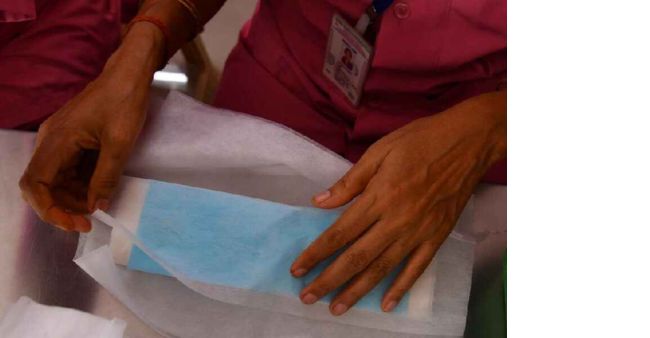The Union Health Ministry is working on formulating a national menstrual hygiene policy that seeks to ensure access to safe and hygienic menstrual products, improve sanitation facilities, address social taboos, and foster a supportive environment. Through these measures, the policy strives to break barriers, eliminate stigma, and create a society where menstrual hygiene is prioritised and leads to gender equality, education, and overall development, official sources said.
“The vision is to ensure all women, girls, and persons who menstruate are able to experience menstruation in a manner that is safe, healthy, and free from stigma,” a source said. Awareness has increased with time, but there is a need for more investment to comprehensively address the diverse requirements of all individuals who menstruate. India, with its vast and diverse population, places great emphasis on framing a comprehensive menstrual hygiene policy, the source added.
According to the National Family Health Survey 5, 78 percent of women in the 15–24 age group use a hygienic method of protection during their menstrual cycle. This marks a rise from 58 percent in the National Family Health Survey 4. According to the latest survey, 64 percent of these women use sanitary napkins, 50 percent use cloth, and 15 percent use locally prepared napkins. The survey also revealed that women who have received 12 or more years of schooling are more than twice as likely to use a hygienic method compared to those with no schooling, stressing the importance of education for girls. In terms of location, 73 percent of rural women and 90 percent of urban women use a hygienic method of menstrual protection.
According to the source, “The menstrual hygiene policy aligns with India’s commitment to achieving the sustainable development goals, particularly in relation to Goal 3 on good health and wellbeing, Goal 4 on quality education, Goal 5 on gender equality, and Goal 6 on clean water and sanitation. It places a specific focus on prioritising underserved and vulnerable populations, ensuring equitable access to menstrual hygiene resources, and addressing their specific needs.”
The objective is to ensure that women, girls, and persons who menstruate have access to safe, hygienic, and quality menstrual products and sanitation facilities, the source added. The policy aims at establishing an enabling environment for people, including women, girls, men, and boys, so that they have access to correct information on menstruation and can address the myths, stigma, and gender issues around it. It also aims to create a ‘menstrual friendly environment’ in all settings, including homes, schools and academic institutions, workplaces, and public spaces, and strengthen environmentally sustainable menstrual waste disposal, the official source stated.





















